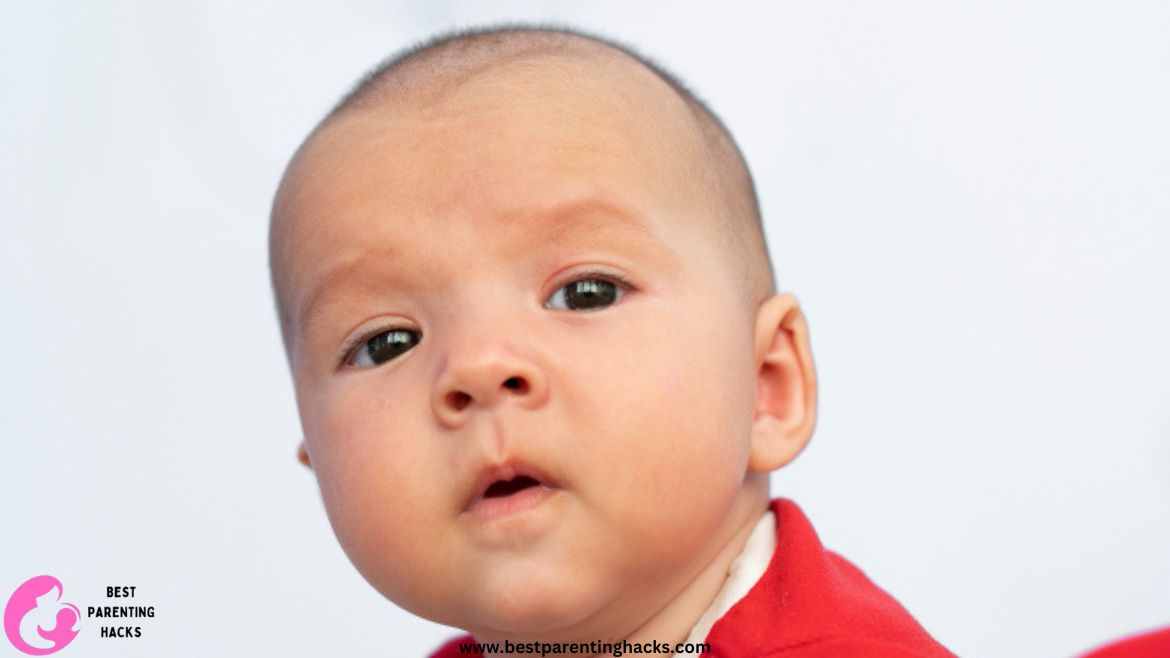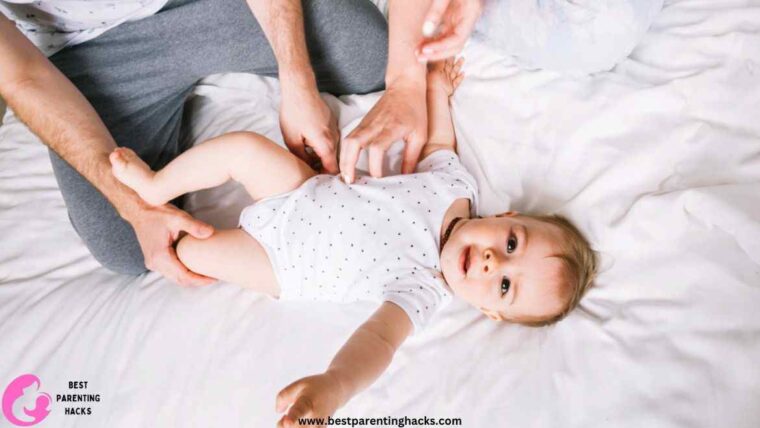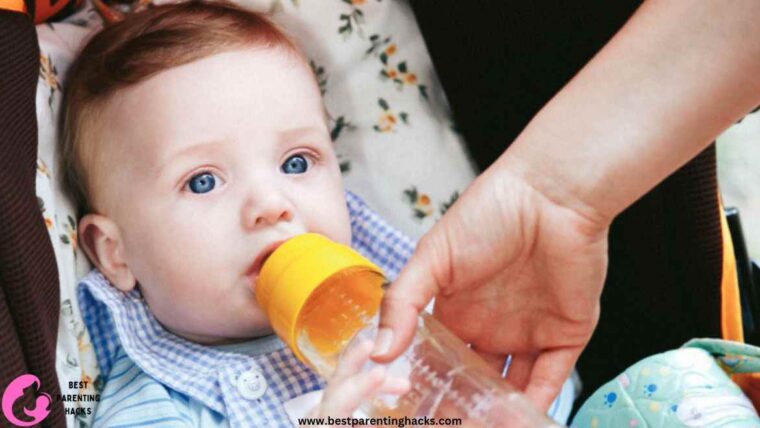Table of Contents
Greetings, fellow carers, and parents! Let’s discuss a subject that has probably piqued your interest on several occasions: the reason behind certain kids’ lack of noticeable eyelashes or eyebrows at birth. I remember looking into those large, gorgeous eyes when my little one came and wondered where those little hairs were. New parents frequently ask this question, which is encapsulated in a lot of love and worry. Though the truth might be very different, we generally envisage newborns with gorgeous, fluttering eyelashes and expressive eyebrows. On the other hand, its absence is rarely a reason for concern.
In response to the query “Why does my baby have no eyebrows or eyelashes?” that appears in our headline. The plain fact is that some newborns do not have noticeable eyelashes or eyebrows at birth; this is very natural. This is a normal variance in the growth of humans. These facial characteristics develop differently in each infant and are influenced by a variety of variables, including ethnicity, prenatal development, and inheritance. Therefore, don’t worry if your little bundle of joy doesn’t yet have those little hairs. They will probably show up when your child gets older.
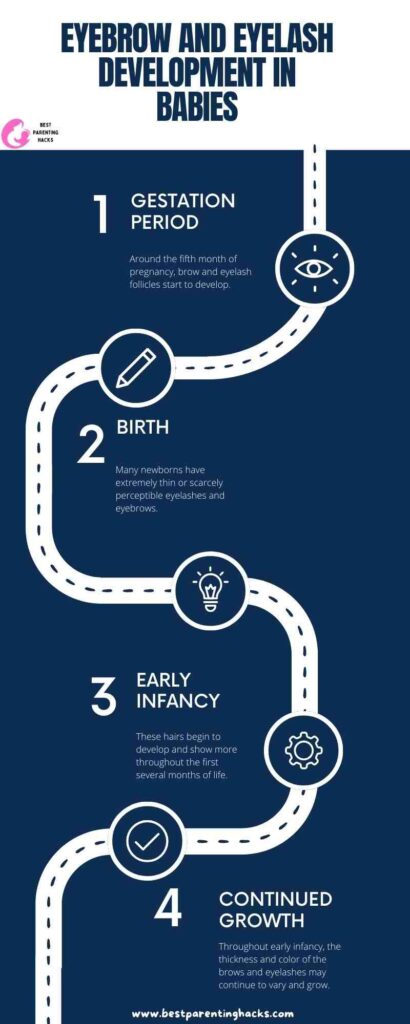
Eyebrow and Eyelash Development in Babies
Babies’ remarkable journey of developing eyebrows and eyelashes starts long before they make their spectacular arrival into the world. The foundations for these hairs are laid at week 22 of pregnancy. However, they need time to sprout and become evident, similar to seeds placed in a garden. These hairs can be so tiny and light in the first few weeks and months after birth that they are practically undetectable, especially in kids with lighter hair colors.
There are four main phases to its development:
1. Gestation Period: Around the fifth month of pregnancy, brow and eyelash follicles start to develop.
2. Birth: Many newborns have extremely thin or scarcely perceptible eyelashes and eyebrows.
3. Early Infancy: These hairs begin to develop and show more throughout the first several months of life.
4. Continued Growth: Throughout early infancy, the thickness and color of the brows and eyelashes may continue to vary and grow.
You Might Also Like to Read: I Accidentally Gave My Baby Honey Nut Cheerios. What Should I Do?
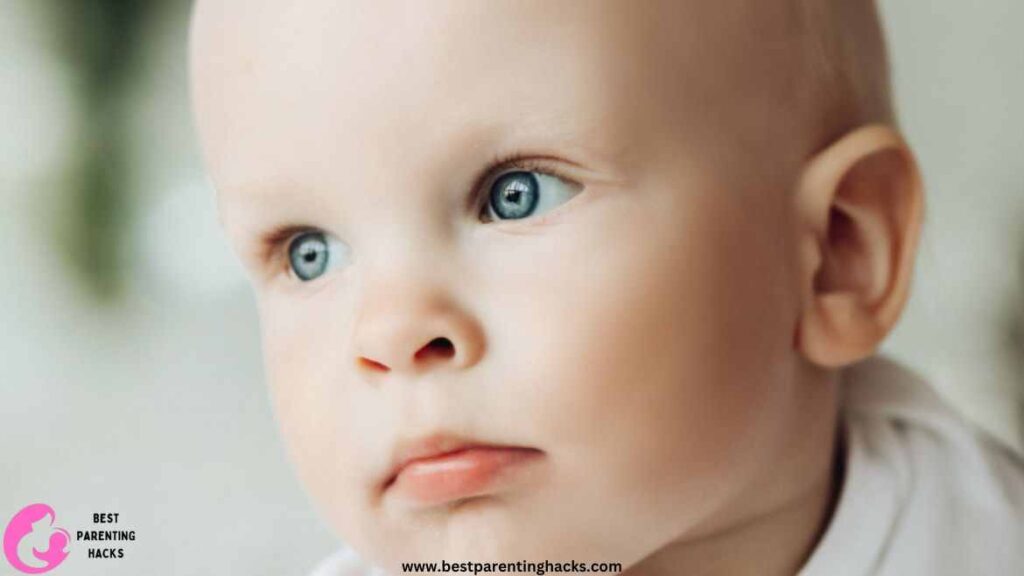
Genetic and Hormonal Influences
Genetics and hormones are the main players when it comes to a baby’s development of eyebrows and eyelashes. These elements affect the future appearance and development pattern of these hairs as well as their existence at birth.
Let’s examine five crucial elements:
1. Parental Traits: A major factor is the genetic composition acquired from both parents. Your kid may acquire these traits later in life if you or your partner did.
2. Ethnic Background: Hair development patterns differ among ethnic groups, which may affect how noticeable an infant’s eyebrows and eyelashes are.
3. Hormonal Factors: Because hormones control hair growth, changes in hormone levels may have an impact on how certain facial characteristics develop.
4. Sibling Variations: Because every kid gets a different combination of genes, there can be notable variances in hair development even among siblings.
5. Gender Influences: Studies have shown that there may be minor variations in the hair development patterns of male and female newborns.
You Might Also Like to Read: How Many Baby Washcloths Do I Need?
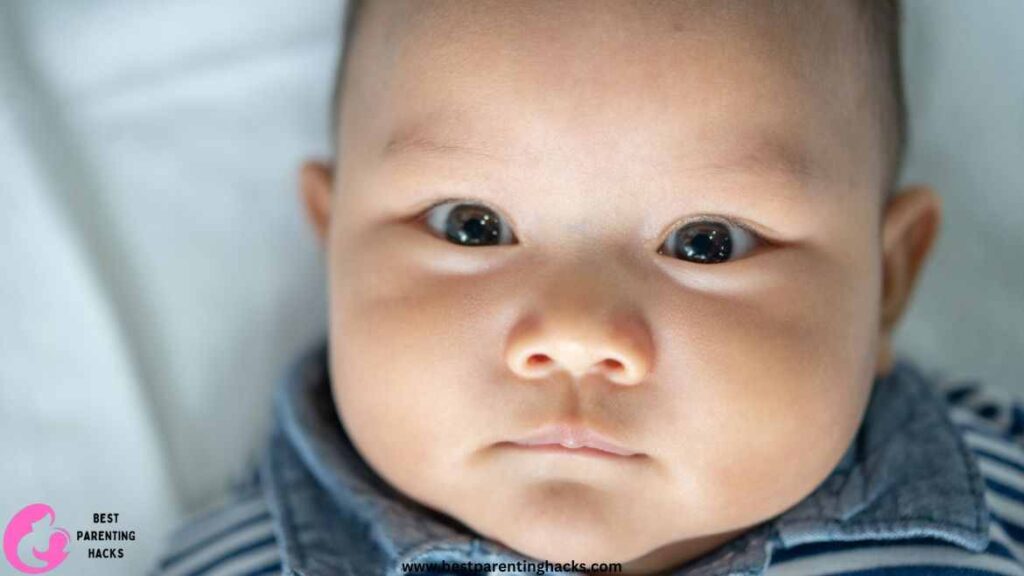
Common Concerns and Misconceptions
It’s normal for parents to worry about every facet of their child’s growth. But there are a few myths regarding the development of eyelashes and eyebrows that might frighten people unnecessarily.
These are five widespread misunderstandings:
1. Visible Eyebrows and Eyelashes at Birth Are the Norms: Contrary to popular belief, not all newborns have visible eyebrows and eyelashes.
2. Absence Indicates a Health Problem: It is uncommon for the absence of these hairs at birth to point to a health problem.
3. Darker Hair Means Quicker Growth: It’s a common misperception that newborns with darker hair will grow eyelashes and eyebrows more quickly.
4. Shaving will Promote growth: There is a cultural belief that shaving a baby’s head would encourage the development of hair, however, this is unfounded in science and is not advised.
5. Applying Oils or Creams Will Speed up Growth: Although skin sensitivity is a concern, using items to promote hair growth is superfluous and may cause irritation.
Health Conditions and Syndromes
Rarely, some medical disorders or syndromes may be linked to the lack of eyebrows or the delayed growth of eyelashes. But these are typically accompanied by additional symptoms.
There are four things to think about:
1. Genetic Syndromes: Hair growth may be impacted by specific genetic disorders, such as Ectodermal Dysplasia.
2. Nutritional Factors: Although they are uncommon, severe dietary shortages might affect the growth of hair.
3. Hormonal Imbalances: Hair growth patterns can be influenced by conditions that impact the balance of hormones.
4. Skin Conditions: Alopecia areata is one skin disorder that can cause hair loss, especially in the brow and eyelash regions.
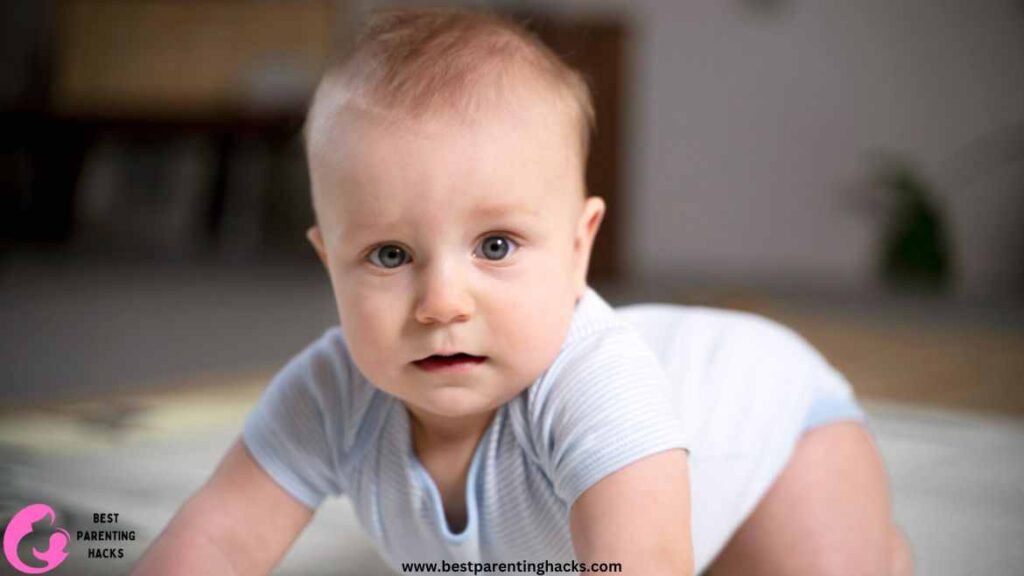
Caring for Your Baby’s Eyebrows and Eyelashes
It’s important to avoid harsh treatments and to use gentle approaches while caring for your baby’s developing lashes and eyebrows.
Five suggestions for taking care of yourself:
1. Gentle Washing: When bathing your infant, use a gentle cloth and light baby soap.
2. Avoiding Harsh Chemicals: Steer clear of adult hair treatments and products.
3. Nutrition: Make sure your child is getting enough nutrients, as this is necessary for normal hair development.
4. Consulting a pediatrician: Speak with your doctor before using any substance to encourage hair development.
5. Observation: Keep a close eye on your infant’s hair development and see a doctor if you see any odd patterns or hair loss.
Patience and Natural Growth
The growth of your baby’s eyelashes and eyebrows requires patience. Since each infant is different, there might be wide variations in their growth timetable. It’s critical to keep in mind that these characteristics will mature at their own pace. Stress is only added when you worry about deadlines or compare your infant to other babies. Accept every step of your child’s development and remember that their expressive little faces will soon include those gorgeous lashes and eyebrows.
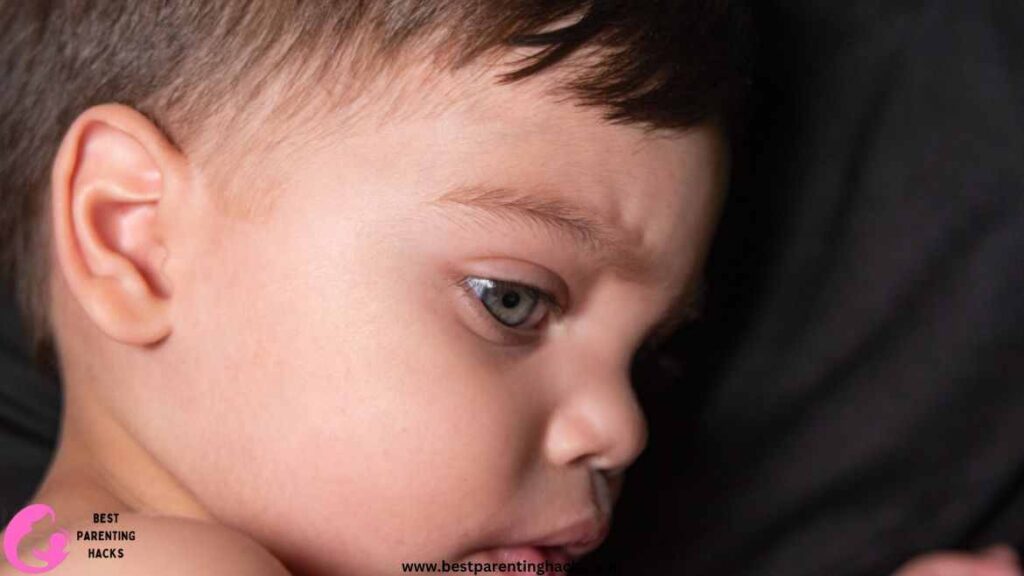
Conclusion
To sum up, the growth of eyelashes and eyebrows in infants is a normal process that differs substantially across children. Hereditary, hormonal, and environmental variables all play a role in it. It is our responsibility as parents to nurture our children gently and to wait patiently as they grow and develop at their special rate. Recall that every kid is unique in their way, and these minute details will show themselves when the time is right. Thus, enjoy every second you have with your child, and know that their adorable eyelashes and eyebrows will grow soon!
FAQs
1. Why does my child still lack eyelashes and eyebrows?
• A few months after birth, newborns frequently start to grow noticeable eyebrows and eyelashes. This varies and is impacted by hormonal and genetic variables.
2. When can I anticipate the onset of my baby’s eyelashes and eyebrows?
• Although it might vary, most newborns begin to exhibit notable development in their eyebrows and eyelashes about two to three months of age.
3. Might the lack of eyelashes or eyebrows be a sign of a medical problem?
• Although it’s uncommon, some genetic disorders may have an impact on hair development. See a pediatrician if you have any concerns.
4. What steps can I take to promote hair growth?
• Generally speaking, newborn hair grows naturally. Nonetheless, good skin and hair may be supported by soft care and avoiding harsh products.
5. How does my baby’s hair development relate to genetics?
• The genes your child inherits from both parents affect the features of their hair, such as the presence and size of eyebrows and eyelashes.
6. If my baby’s siblings started growing hair sooner, should I be concerned?
• Not at all. Since every child is different, fluctuations in the time of hair development are common.
7. What are some widespread myths regarding the development of infant hair?
• There is a widespread misconception that a baby’s lack of eyebrows or eyelashes at birth is uncommon, but in actuality, it’s rather common and typically not a reason for alarm.

